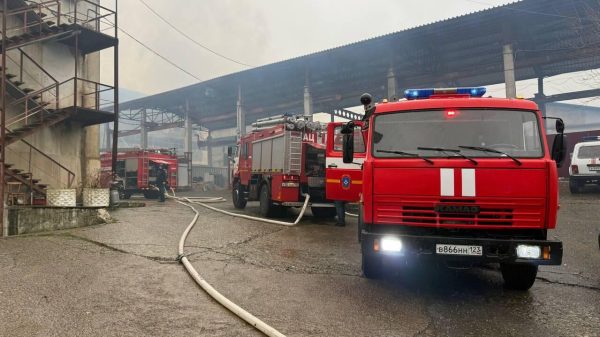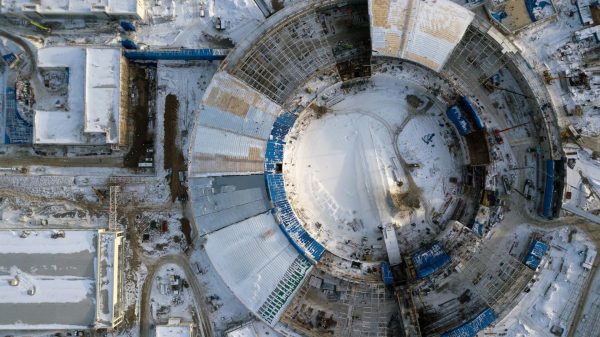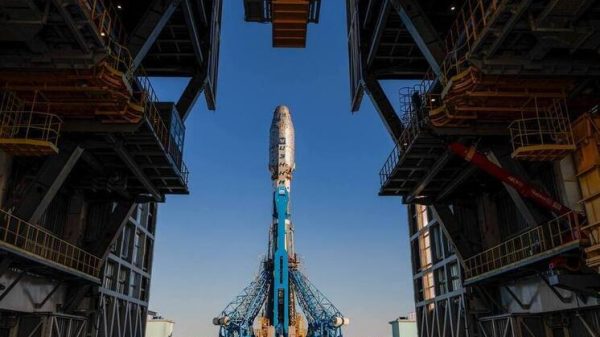Joe Biden came to power promising a New Deal-like economic agenda that would not only combat the Covid-19 pandemic, which has now claimed more than half a million lives and caused unemployment not seen since the Great Depression, but also confront the deep-rooted disparities it has exposed.
Biden under pressure from progressives as he prepares to pick first judges
Read more
After a blitz of executive orders in the opening days of his presidency, Biden is on the verge of achieving the first major piece of his multi-pronged relief and recovery plan, a $1.9tn coronavirus stimulus package expected to reach his desk by the end of next week.
But the partisan tightrope Biden is walking to advance the sweeping pandemic relief bill – which enjoys broad public support – likely foreshadows even greater challenges that lie ahead as he pivots from “rescue” mode to his next and possibly biggest legislative act: a multi-trillion dollar plan to rebuild the country’s ailing infrastructure.
“The American Rescue Plan is largely about relief – for the millions of people unemployed, for distributing vaccines, for opening schools safely,” said Virginia congressman Don Beyers, the Democratic vice-chairman of the joint economic committee.
“This next bill can be almost completely characterized as investment in the future.”
Even more so than the stimulus plan, a wide-ranging jobs and infrastructure bill would weigh the president’s desire for bipartisanship against his promise to enact progressive economic policies that could forge his legacy. With the barest of majorities in Congress, Biden has little room for error if he hopes to succeed in a policy quest that bedeviled his predecessors.
In theory, infrastructure is an area where Democrats and Republicans can find common ground. Fixing bridges, roads and broadband networks has long unified Americans and elected leaders. Yet there is little bipartisan agreement over the size and scale of such a package.
“He wants to move as quickly as possible,” Peter DeFazio, an Oregon Democrat and the chairman of the House transportation and infrastructure committee, said after a bipartisan meeting with Biden on Thursday. “He wants it to be very big and he feels that this is the key to the recovery package.”
Emerging from the same meeting, Missouri congressman Sam Graves, the top Republican on the transportation committee, tempered expectations of a deal.
“A highway bill cannot grow into a multi-trillion dollar catch-all bill, or it will lose Republican support,” he warned in a statement. “Republicans won’t support another Green New Deal disguising itself as a transportation bill.”
During his presidential campaign, Biden cast the infrastructure effort as an economic road map to create jobs and revitalize industry, saying it would be the “largest mobilization of public investment since” the second world war.
As proposed, his “Build Back Better” infrastructure plan would spend trillions of dollars to make the US economy more sustainable, more equitable and more competitive, particularly with China, with ambitious investment in public transportation, sustainable housing, electric vehicles and upgrading the power grid to be carbon pollution-free by 2035. Funded by a mix of tax increases on corporations and the wealthy, his agenda promises to create millions of union jobs and direct significant resources to communities of color disproportionately affected by the consequences of climate change.
As talks intensify between the White House and Congress, progressives and environmental groups are contemplating even bigger proposals, pointing to the recent crisis in Texas that left millions without water and electricity during a severe winter storm, as a reason to act urgently – and unilaterally, if necessary. Some moderate Democrats are angling for a more cautious, bipartisan approach, while Republicans and business groups are setting conditions for their cooperation, as fights brew over how to pay.
The White House has said it is premature to talk about the shape of an infrastructure package, at least until Congress passes the relief bill. But this week, House Speaker Nancy Pelosi said Democrats were already proceeding with the “recovery” part of Biden’s agenda.
“Its’ an exciting time,” she said.
Haunted by the slow-paced recovery that followed the financial collapse of 2008, when the Obama administration enacted a slimmed-down stimulus package amid fears of inflation and Republican objections to rising national debt, only to suffer major defeats in midterm elections, Democrats are eager to act boldly while they have unified control of Congress.
“If you have an opportunity to go big, go big,” Beyer said. “You’re going to pay a political cost one way or the other, so you might as well get as much as you possibly can when you get the opportunity to do it.”
Sean McElwee, co-founder and head of the progressive polling firm, Data for Progress, said it was good policy and good politics to pursue an ambitious economic agenda. Voters prioritize results over bipartisanship, he said, arguing that Democrats could defy political history in the 2022 congressional midterms if they act boldly on the economy.
“Joe Biden understands that Democrats will be judged in 2022 by how he has handled the economy and the pandemic,” McElwee said, citing broad public support for the president’s relief plan and the enduring appeal of infrastructure spending. “The political benefits of going small just aren’t there any more.”
Biden has held several high-profile meetings to build support for a bipartisan package, including with top officials, labor leaders and lawmakers involved in drafting infrastructure legislation.
Ahead of his meeting with lawmakers on Thursday, Biden said the group, which included transportation secretary Pete Buttigieg, planned to discuss “what we’re going to do to make sure we, once again, lead the world across the board on infrastructure”.
After spending decades in the Senate and eight years as vice-president to Barack Obama, Biden is plainly aware of the complex matrix of political and ideological considerations that have felled previous attempts to pass a major infrastructure bill.
Yet since the onset of the pandemic, and the ensuing economic crisis, Biden has embraced a far more aspirational agenda that intentionally echoes the vision of Franklin Roosevelt, whose New Deal programs helped lift the country out of the Great Depression and transformed the role of government in American life.
Despite his reputation for compromise and preference for bipartisanship, Biden largely rejected appeals from Republicans to dramatically shrink his $1.9tn stimulus package, which includes $1,400 payments to tens of millions of families, extended unemployment benefits as well as tens of billions of dollars for vaccine distribution and coronavirus testing.
In pitching his relief plan, Biden has insisted that now is time to “go big,” and that the greater risk is doing too little, not too much. But as he looks beyond the immediate crisis, it remains unclear how the president will choose to proceed with the rest of his agenda.
Progressives, largely encouraged by the opening weeks of his presidency, are now pressuring Biden to adopt the same go-it-alone approach for the rest of his agenda. Attempting to forge a consensus with Republicans, they warn, would almost certainly result in a bill that falls short of his campaign promises to address the deep-seated, structural inequalities in the economy exacerbated by the pandemic.
“I think Biden understands that there is a real opportunity here to deliver lasting, legacy-defining improvements to America that otherwise would never get done,” said Faiz Shakir, who was the campaign manager for Bernie Sanders’ 2020 presidential run. “He wanted an FDR-modeled presidency and this would be a huge, huge investment in working people on a scale that we have not seen since FDR.”
The urgency of the pandemic has helped fuse public opinion – and a factious Democratic caucus – around the need for a massive stimulus bill. But spending trillions more on infrastructure with initiatives that reach far beyond the present emergency is a different battle entirely, said Bill Galston, a senior fellow at the Brookings Institution.
Biden campaigned on his plans to control the pandemic – and a promise to end hyper-partisanship in Washington. A plan that achieves neither goal could risk a “huge political backlash” beginning with the midterms next year, Galston said.
“History is full of administrations who came to power, over-read their mandate and then went too far and evoked a reaction,” he said.






















































Свежие комментарии